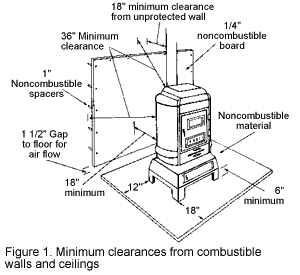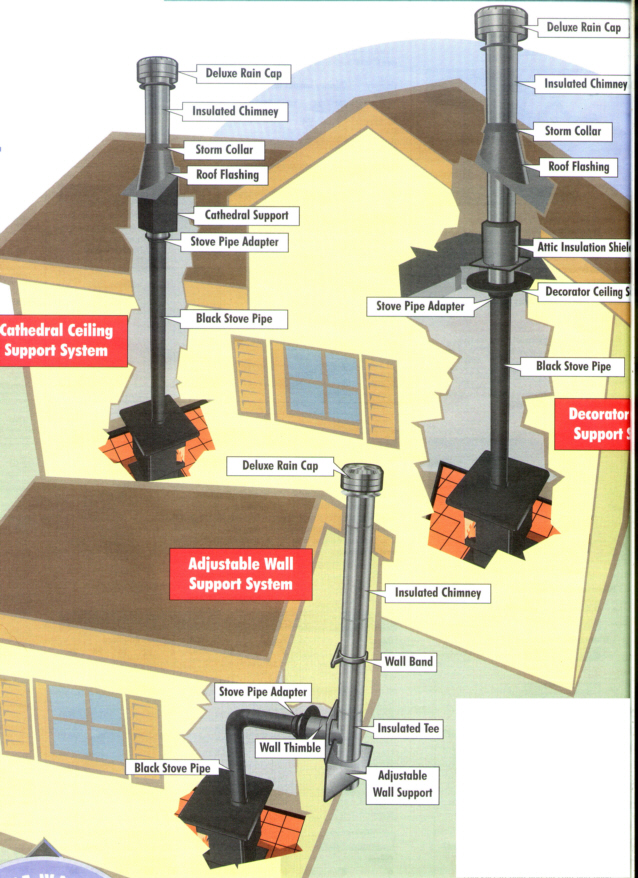Are you ready to embrace the cozy warmth and rustic charm of a wood stove in your home? Installing a wood stove not only adds a touch of timeless elegance to your living space, but it also offers a cost-effective and energy-efficient way to keep your home toasty during those chilly winter nights. If the prospect of installing a wood stove seems daunting, fear not! In this guide, we will walk you through the step-by-step process of installing a wood stove, ensuring that you have all the knowledge and confidence you need to successfully complete this rewarding project.
From selecting the perfect location within your home to properly venting the stove, we will cover all the essential aspects of wood stove installation. Whether you are a seasoned DIY enthusiast or a novice looking to take on a new challenge, this comprehensive guide will provide you with the necessary information and expert tips to bring warmth and beauty to your living space. So, let’s dive in and discover the joy of installing a wood stove, unlocking a world of cozy ambiance and efficient heating for your home.
How to Install a Wood Stove:
- Choose a suitable location for the wood stove.
- Ensure proper clearance from combustible materials.
- Install a non-combustible floor pad to protect the floor.
- Create a proper chimney system for venting the stove.
- Connect the stove to the chimney using a flue pipe.
- Securely attach the stovepipe to the flue collar of the stove.
- Test the stove for proper operation and adjust as needed.

How to Install a Wood Stove: A Step-by-Step Guide
Installing a wood stove can be a great way to add warmth and ambiance to your home. However, it is important to approach the installation process with caution and follow the necessary steps to ensure your safety and the proper functioning of the stove. In this guide, we will take you through the step-by-step process of installing a wood stove in your home.
1. Determine the Ideal Location for Your Wood Stove
The first step in installing a wood stove is to determine the ideal location for it in your home. Choose a location that is central to the areas you want to heat and has proper clearance from combustible materials. It is essential to consult your local building codes and regulations to ensure compliance.
Once you have identified the location, mark the area where the stove will be placed and clear any obstructions. Make sure there is a solid, non-combustible surface such as a brick or stone hearth to protect the floor from heat and sparks.
2. Install the Chimney
The next step is to install the chimney system for your wood stove. This involves determining the appropriate height for the chimney, based on the height of your roof and the necessary clearance from nearby structures. Install the chimney pipe through the ceiling and roof, following the manufacturer’s instructions.
Ensure that the chimney is properly secured and insulated to prevent heat loss and reduce the risk of fire. It is recommended to use a professional chimney installer or consult a licensed contractor to ensure proper installation.
3. Prepare the Stove and Connect the Flue Pipe
Before installing the wood stove, inspect it for any damage or defects. Make sure all components are in good condition and functioning correctly. Follow the manufacturer’s instructions to assemble the stove and attach the flue collar.
Connect the flue pipe to the stove’s flue collar and secure it tightly using the appropriate connectors. Ensure that the flue pipe is properly aligned and angled towards the chimney. Use high-temperature sealant or gaskets to create a tight seal between the flue pipe sections.
4. Secure the Stove and Complete the Installation
Position the wood stove on the marked area and secure it according to the manufacturer’s instructions. Use non-combustible spacers if required to maintain proper clearance from combustible materials.
Once the stove is securely in place, connect the flue pipe to the chimney system. Double-check all connections and ensure that they are tightly sealed. Test the draft of the stove by lighting a small fire and observing the smoke movement. Adjust the damper or air controls as needed to achieve optimal performance.
5. Maintain and Operate Your Wood Stove Safely
After completing the installation, it is crucial to regularly maintain and clean your wood stove to ensure its efficient and safe operation. Follow the manufacturer’s instructions for cleaning the stove and chimney, and schedule professional inspections and cleanings at least once a year.
Remember to always use dry and seasoned wood for burning, as wet wood can lead to excessive smoke and creosote buildup. Additionally, practice proper fire safety measures by keeping flammable items away from the stove, using a fire screen, and never leaving the fire unattended.
6. Conclusion
In conclusion, installing a wood stove requires careful planning and adherence to safety guidelines. By following the step-by-step instructions outlined in this guide, you can successfully install a wood stove in your home and enjoy the warmth and comfort it provides.
Frequently Asked Questions
Here are some commonly asked questions about how to install a wood stove:
Q: What are the necessary preparations before installing a wood stove?
Before installing a wood stove, there are a few important preparations that should be made. Firstly, you need to ensure that you have the necessary permits and permissions from your local authorities. This may involve contacting your local building department or fire department to determine any specific regulations or guidelines you need to follow.
Another important preparation is to select the right location for your wood stove. It should be placed on a non-combustible surface, such as a hearth or a non-combustible floor pad. Additionally, you need to ensure that there is enough clearance around the stove to prevent any fire hazards. It is recommended to consult the manufacturer’s guidelines or a professional installer for specific clearance requirements.
Q: What safety precautions should be taken during the installation process?
During the installation process, it is crucial to prioritize safety to prevent any accidents or hazards. Firstly, make sure to turn off the power to any nearby electrical outlets or appliances before starting the installation. This will help minimize the risk of electrical shocks or fires.
Additionally, it is important to handle the wood stove with caution. They can be heavy and require proper lifting techniques to avoid strain or injury. It is recommended to have at least two people involved in the installation process to ensure safe handling.
Q: Do I need a professional to install a wood stove?
While it is possible to install a wood stove yourself, it is highly recommended to hire a professional installer. A professional will have the knowledge and experience to ensure that the installation is done correctly and safely.
Improper installation can lead to various issues such as fire hazards, inefficient heating, or damage to your property. By hiring a professional, you can have peace of mind knowing that the wood stove is installed according to the necessary regulations and guidelines.
Q: What are some important ventilation considerations for a wood stove installation?
Proper ventilation is essential for the safe and efficient operation of a wood stove. One of the key considerations is the installation of a chimney or flue system. The chimney should be properly sized and installed to ensure that the smoke and gases produced by the wood stove can be safely and effectively vented outside.
It is also important to consider the height and location of the chimney. The chimney should extend above the roofline to prevent downdrafts and ensure proper draft. Additionally, the chimney should be placed away from any combustible materials to reduce the risk of fire.
Q: How often should a wood stove be inspected and maintained?
To ensure the safe and efficient operation of a wood stove, regular inspections and maintenance are necessary. It is recommended to have the wood stove inspected at least once a year by a professional chimney sweep or wood stove installer.
During the inspection, the chimney, flue, and other components will be checked for any signs of damage or blockages. The wood stove should also be cleaned regularly to remove any creosote buildup, which can increase the risk of chimney fires. Following the manufacturer’s guidelines for maintenance and cleaning is essential to prolong the lifespan and performance of the wood stove.

Not only does the installation of a wood stove provide practical benefits, but it also adds a touch of rustic charm and ambiance to your living space. The crackling sound of the fire and the cozy warmth it generates create a welcoming atmosphere that is hard to replicate with any other heating method. Furthermore, wood stoves offer the added advantage of being environmentally friendly, as wood is a renewable and carbon-neutral source of heat. By learning how to install a wood stove, you are taking a step towards a more sustainable lifestyle and reducing your carbon footprint. So why wait? Begin your journey to a warmer, more inviting home by embarking on the installation of a wood stove today.
- How to Design Wood Carving - May 7, 2024
- How to Carve Wood - May 7, 2024
- How to Remove Cat Urine From Wood Furniture - May 7, 2024